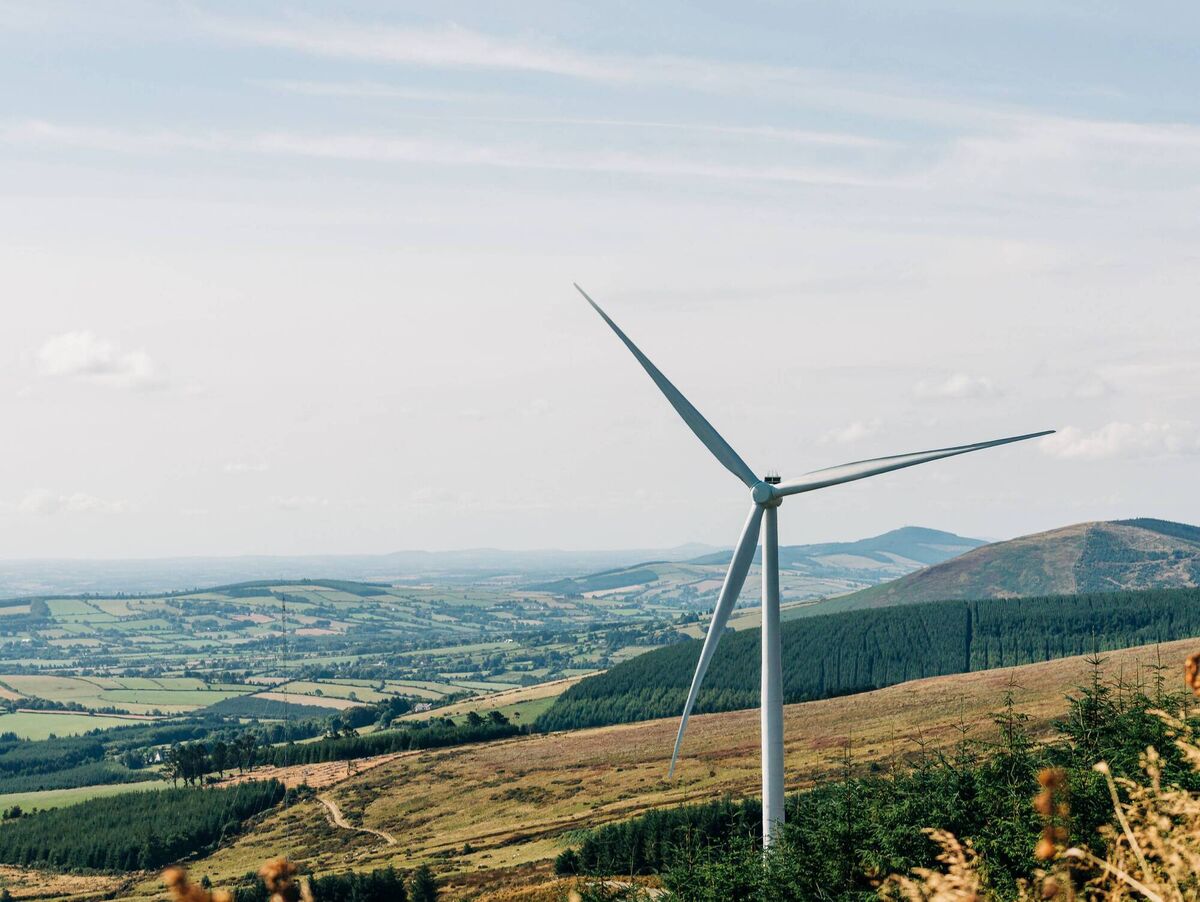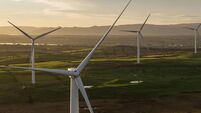€88m Waterford wind farm refused over location in 'exclusion zone' for renewable energy projects

An Bord Pleanála rejected the plans by Coumnagappul Wind Farm Limited to construct 10 wind turbines as part of a strategic infrastructure development across 211 hectares of farmland and upland heath located in the western foothills of the Comeragh Mountains. File picture: Chani Anderson
Planning permission for an €88m wind farm in Co Waterford has been refused because of its proposed location in an “exclusion zone” for renewable energy projects and the visual impact of 185-metre-high wind turbines on a scenic area.
An Bord Pleanála rejected the plans by Coumnagappul Wind Farm Limited to construct 10 wind turbines as part of a strategic infrastructure development across 211 hectares of farmland and upland heath located in the western foothills of the Comeragh Mountains.
Although the board acknowledged that the project was supportive of a policy objective of the Waterford City and County Development Plan 2022-2028 on renewable energy generation, it said the proposed wind farm was due to be located in an area identified as an “exclusion zone” for such developments.
For that reason, the board said approving the application would represent a material contravention of the county development plan. However, it stated no evidence had been provided that would support such a material contravention.

Noting that the proposed site of the wind farm was not an appropriate location, the board stressed its decision would not militate against the wider ability to secure planning permission for wind energy projects in Waterford.
The board also refused planning permission on grounds that the wind farm was due to be located in an upland area designated as “most sensitive” and one of scenic value. The board said one of the most significant effects of the wind farm would have been the visual impact of the erection of 10 wind turbines which had a tip height of 185 metres.
It said the turbines would be most discernible within the immediate locality for a range of five kilometres which would have an adverse impact on the amenities of the area. It said the adverse effects of the wind farm could not be mitigated, avoided or otherwise addressed and that a grant of planning permission “would not be environmentally sustainable” as required under the national climate objective.
An inspector with An Bord Pleanála in a 253-page report on the project said the development would be “incongruous” and at odds with the county development plan in relation to designated sensitive landscapes.
Coumnagappul Wind Farm, which is owned by renewable energy firm, EMPower, said the proposed wind farm had been sited and designed sympathetically to reduce potential significant effects on the environment and community and which recognised the importance of the surrounding habitat.
The company argued significant weight should have been given to national energy and climate objectives. The rejected project would have provided output of 72 MW producing enough power to provide the energy needs of 40,100 households.
The company claimed it would have created 138 direct jobs and provided €4.9 million for a local community fund as well as paying €21 million to the local authority in rates.
Waterford City and County Council had recommended that planning permission for the project should be refused with the local authority strongly rejecting the findings and conclusions of an environmental impact assessment report (EIAR) submitted by the applicant in relation to impacts on the scenic area and the local road network as well as the policies and objectives of the county development plan.
Councillors representing the areas of Dungarvan and Lismore had also expressed concern about the scale of the development. The Department of Housing, Local Government and Heritage said it had not been established that the development would not cause a net loss of biodiversity.
Fáilte Ireland criticised the company’s EIAR for noticeably underestimating the likelihood of the wind farm having significant, negative impacts on the landscape. Over 60 third-party submissions were received by An Bord Pleanála including ones from the Comeragh Community Development Group, Mountaineering Ireland and several walking clubs.















